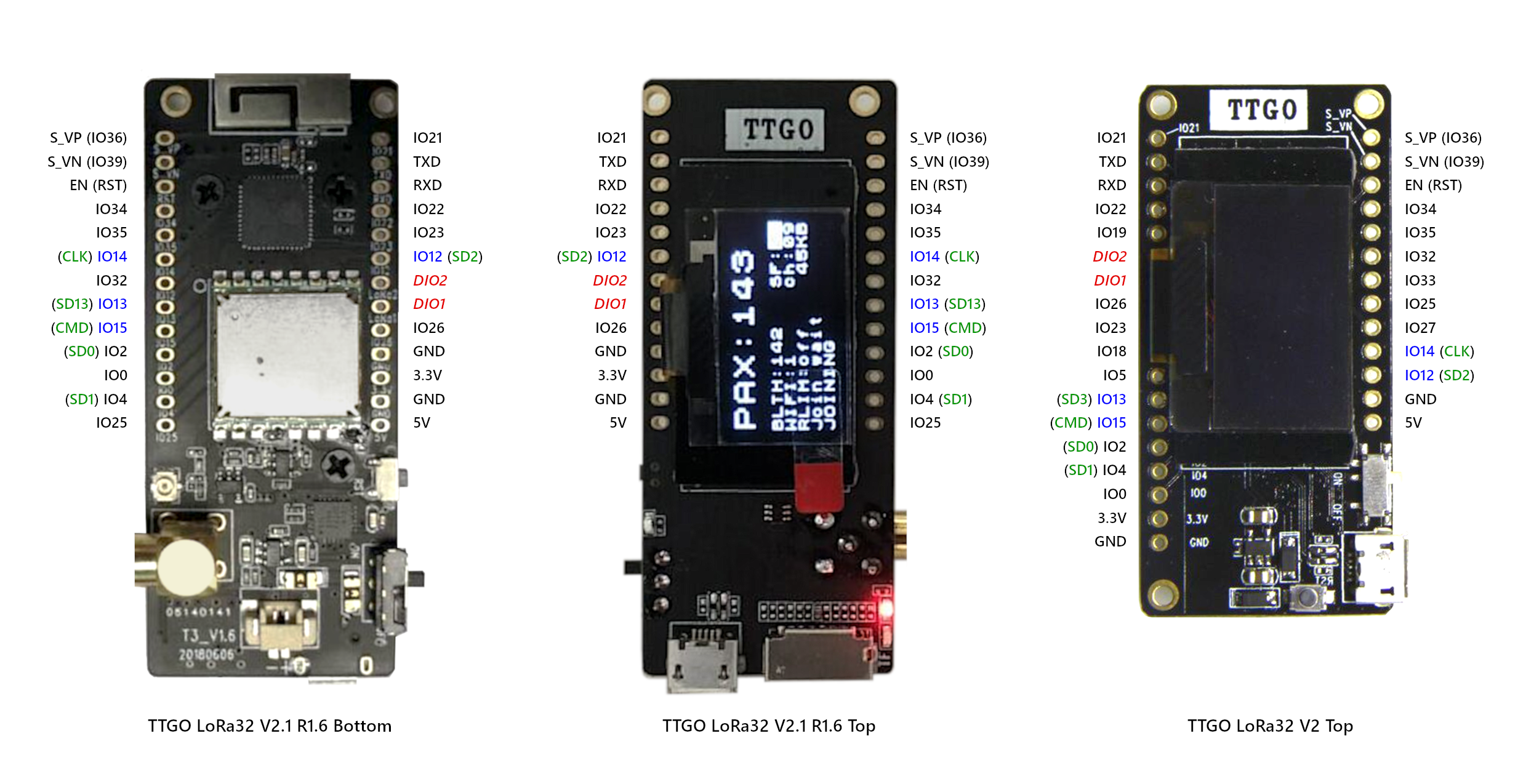TTGO LoRa32 V2.1 rev1.6 versus TTGO LoRa32 V2.0 pin layouts
A while ago I made a comparison between the pin layouts of TTGO LoRa32 V2.1 rev1.6 and TTGO LoRa32 V2.0. There are important differences and a comparison was not available from LilyGO.
The layouts are included below in png and pdf formats.
Blue labeled pins are GPIO ports for the JTAG interface. Green labeled pins are GPIO ports used for the SD Card. Red labeled pins are LoRa DIO ports that are not connected to GPIO ports (and require explicit wiring to a GPIO pin when needed).

PDF: TTGO LoRa32 V2.1 rev1.6 versus V2.0 pin layout comparison rev1.1.pdf (2.2 MB)
UPDATE:
Different from what the above comparison says DIO1 and DIO2 on the TTGO LoRa32 V2.1.6 (V2.1 rev 1.6) seem to be already wired on the PCB.